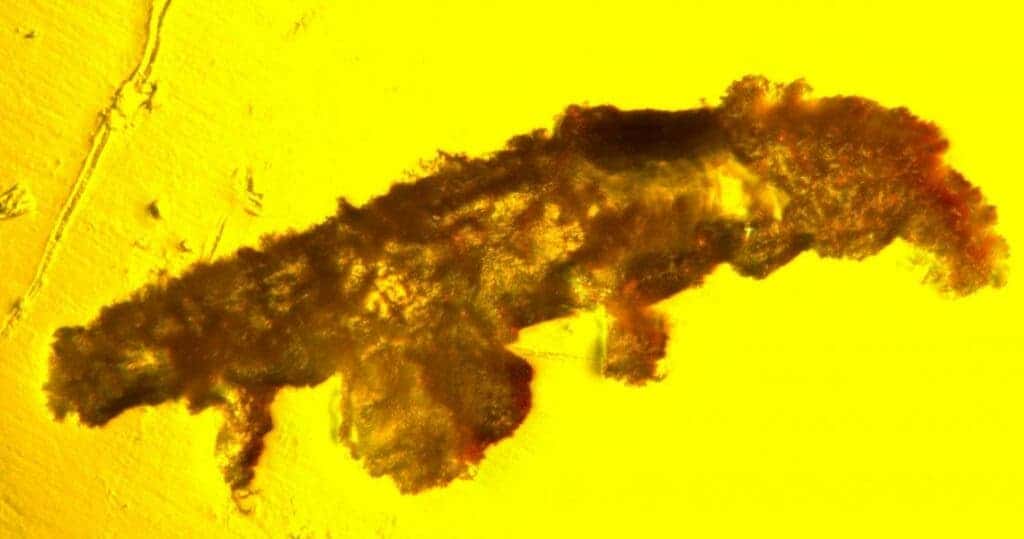Tardigrades, microscopic animals that live in water and are really good at coping with extreme environments and surviving decades without food. But for all their resilience, they’re rarely fossilized. Now, in a new study, researchers have found a 16-million-year-old-fossil in an ancient piece of amber from the Dominican Republic.

Only two fossils of the creature were ever found before, although tardigrades have been around for over 90 million years. This last discovery is the first tardigrade fossil to be recovered from the current Cenozoic era, which started 66 million years ago. The researchers believe it’s the best-imaged fossil tardigrade to date.
The tardigrade earned its own genus and name, Paradoryphoribius chronocaribbeus, because it’s so different from previously known specimens. It’s part of the modern tardigrade family Isohypsibioidea and it will help to better understand the evolutionary history of tardigrades, which are creatures of particular interest for researchers.
“The discovery of a fossil tardigrade is truly a once-in-a-generation event,” Phil Barden, senior author of the study, said in a statement. “What is so remarkable is that tardigrades are a ubiquitous ancient lineage that has seen it all on Earth, from the fall of the dinosaurs to the rise of terrestrial colonization of plants. Yet, they are like a ghost lineage.”
The tardigrade was actually spotted by Barden’s co-author Brendon Boudinot, who saw it next to the ants that he had been analyzing in the ancient amber. At first he thought it was a crack or fissure that happened to look like a tardigrade. While extremely happy, he considered the discovery was “enough tardigrade luck for one career.”
The remarkable tardigrades
The researchers used a high-powered laser confocal fluorescence microscopy to look further at the fossil and its place on the tardigrade ancestral tree. This allowed to look at the specimen in very close detail. Then they compared it across morphological features associated with most of the tardigrade groups alive today, such as body surface and egg morphology.
“The fact that we had to rely on imaging techniques usually reserved for cellular and molecular biology shows how challenging it is to study fossil tardigrades,” Javier Ortega-Hernandez, co-author, said in a statement. “We hope that this work encourages colleagues to look more closely at their amber samples with similar techniques to better understand these cryptic organisms”.
The discovery is only “scratching the surface” of our understanding of the tardigrades, the researchers said, hoping further findings could come in the future. The fact that this specimen was found in an amber deposit suggests that others could have been overlooked in the past. Finding more fossils would allow us to learn more about how tardigrades have changed over time.
Around 400 species of tardigrades that have been discovered so far, and they seem to be able to survive in all sort of environments. From freshwater mosses to the deep ocean, these creatures can survive up to 30 years without food, temperatures going from absolute zero to above boiling and including in the vacuum of space. They are trully remarkable and worth studying further.
For now, it’s all excitement among the group of researchers, who even wrote a song to commemorate the occasion. It goes like this: “Tardigrade amber fossils, there were only two. …Well now, there’s three. Now that you know there’s three, there’s another mystery. What could this fossil be? Well, look at our paper and you’ll see.”
The study was published in the journal Proceedings of the Royal Society B.









